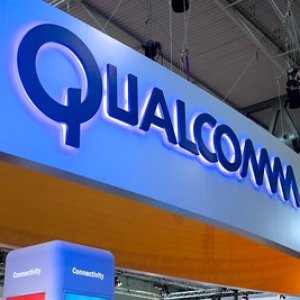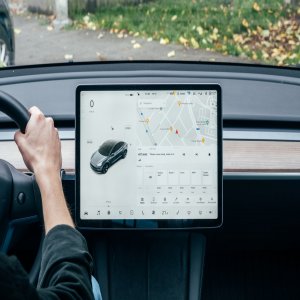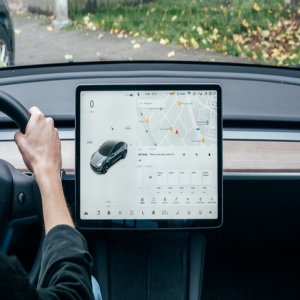5G to Enable Digital Automotive Ecosystem

STORY INLINE POST
Q: How have digitization and connectivity needs opened the door to tech companies in the automotive industry?
A: Qualcomm is a leader in wireless technology and innovation. We drive the technology behind the development and launch of many technologies, such as 5G. Our technology roadmap includes high-capacity processing computer vision, AI, connectivity in 5G, Wi-Fi, location technologies for GPS, Cellular Vehicle-to-Everything (C-V2x), Industry 4.0 and Web 3.0. We are integrating these solutions into the automotive industry, either directly into the car or into production lines.
Q: How will 5G improve the driving experience compared to what 4G offered?
A: We need 5G to support the needs of the next decade and the growing number of connected devices. 5G, compared to 4G, brings 10 times more capacity for downloads and uploads. It also provides 10 times less latency, which is crucial for automotive processes. Autonomous driving needs a latency closer to 1 millisecond, which can be provided by 5G. Autonomous driving also needs high bandwidth and the high capacity for connected devices because it will involve about 1 million connected devices per square kilometer. The automotive industry is one of the large drivers of this technology because it has high requirements for connectivity and processing.
Q: What challenges does Mexico face to successfully implement 5G?
A: The whole world is working to implement 5G. The first step in any new network is finding spectrum availability. Spectrum is a state-owned entity where users transmit thousands of gigabytes of data. 5G requires the allocation of a spectrum with high capacity and bandwidth. Mexico has two major infrastructure operators already developing 5G infrastructure using a spectrum at 3.5 gigahertz, which is the most deployed band in the world. However, operators need access to the millimeter wave spectrum, which ranges from 24-52 gigahertz. With this, we can get the full capacity of gigabytes and data sub-millisecond latencies.
In Latin America, only Brazil and Chile have allocated this spectrum for 5G, while the US allocated it several years ago. The EU, Korea and China are also taking this step. Mexico needs to allocate this spectrum to facilitate infrastructure development. We also need to promote the implementation of optical fiber because despite being a wireless technology, it still requires the support of optical fiber.
Q: How can the Snapdragon Digital Chassis transform OEM offerings and shape consumer preferences?
A: The digital chassis is the cherry on top of our technology, leveraging decades of innovation and R&D. It is one of our most advanced solutions and enables the digital transformation of the automotive industry.
The digital chassis is open and scalable, packing a great deal of technology that can fit the needs of an OEM or Tier1. It is customizable and it merges all technologies involved in the computer vision: reverse camera, sensor processing, connectivity and our AI platform, among others. This is one of the unique experiences that cars will offer in the future.
Its ultimate goal is to prevent accidents. Snapdragon promotes safety by connecting to other cars, to the infrastructure and to the network but it has to be enabled by multiple OEMs, not just a single one. We have worked with several governments to deploy this technology. For example, the Department of Transportation in the US state of Virginia facilitated the infrastructure development for the network. Afterward, we talked to Ford, Audi and Ducati to launch units that can communicate with each other, send safety alerts, collaborate and communicate with the infrastructure, among other abilities.
Q: What benefits has Qualcomm gained from partnering with academia?
A: In the past five years, the Qualcomm Foundation has given over US$30 million to STEM programs in 41 countries, benefiting over 700,000 students. We are one of the promoters of the FIRST robotic program for children; we support FIRST teams in nine countries and three teams in Mexico. In the FIRST Tech Challenge, children use our technology to build a control system for robots. Over 300 students from 27 countries participate in this competition, building robots and presenting them in a Rockstar competition. By allying with academia, we help students go to college. Eventually they will join our workforce as they are already familiarized with Qualcomm technology.
Q: How will the relationship with Samsung Electronics evolve after the new multiyear agreement?
A: We have been long-time partners of Samsung. The latest agreement is just an extension of the work we have been doing for 3G, 4G and 5G. We will now work on the next generation of technology: 6G. Qualcomm is no longer a smartphone technology provider; we are now a technology solutions provider. We are working on Samsung’s Galaxy devices as part of our commitment to offer faster technology to users.
Q: What goals does Qualcomm aim to achieve by the end of 2022?
A: We aim to introduce 750 million 5G-tenabled Qualcomm-powered devices to the market in 2022. Last year, we set the target at 550 million but we increased it because the technology is thriving. We are also partnering with OEMs and other major automotive companies. On Sept. 22, 2022, we will host our Automotive Investor Day. We have multiyear agreements with many car companies, including Stellantis, BMW and Volkswagen Group and their cars will start using our technology starting in 2023.
We will also launch different devices for virtual and augmented realities according to the principles of the Internet of Things (IoT). Automotive companies, such as Volkswagen and Audi, are using our Qualcomm-powered extended reality devices to provide technical support. The industry can have faster response times and reduce costs by eliminating the need to have specialized teams on site. Local employees can be instructed by experts on the other side of the world. This will be crucial for the automotive industry because the car is becoming part of an ecosystem with many services surrounding it. For over a year, the automotive industry has been reducing the cost of tech support and reducing response times through augmented reality. We will be present in more devices by the end of this year.
Qualcomm is the world’s leading wireless technology innovator. It offers powerful connectivity solutions that keep users connected even in remote areas. Qualcomm 5G and AI innovations are the power behind the connected intelligent edge.








 By Sofía Garduño | Journalist & Industry Analyst -
Tue, 08/09/2022 - 12:48
By Sofía Garduño | Journalist & Industry Analyst -
Tue, 08/09/2022 - 12:48












